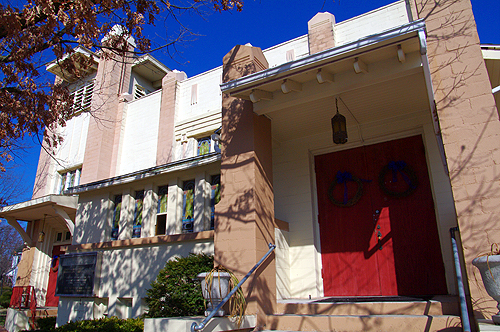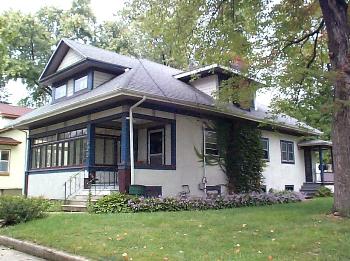Craftsman (1905 - 1930)
 |  |
In the United States, the Arts and Crafts movement represented the first phase of the American Modern movement, leading to two distinct American design traditions – the Prairie style (1900-1920) which began in Chicago under Frank Lloyd Wright, and the Craftsman Style (1905-1930), which was started in Southern California by the Greene brothers. An interest in oriental wooden architecture and training in manual arts led Charles Sumner Greene and Henry Mather Greene to design and build intricately detailed residences. Their buildings received national publicity through magazines such as Western Architect, The Architect, House Beautiful, Good Housekeeping, Architectural Record, Ladies’ Home Journal, and Country Life in America. Pattern books offered Craftsman style plans, and pre-cut packages of lumber and detailing made the style a huge national success.
| |
Identifying features of the Craftsman style include a low pitched gabled roof with a wide, unenclosed eave overhang, low and exposed roof rafters, decorative beams or braces under gables, and a modernization of historical ornamentation. Craftsman Style houses may have a full or partial width porch, with a roof supported by tapered square columns, frequently extending to the ground level without a break at the porch floor. Side and front gabled roofs are most frequently observed, although cross gabled and hipped roofs were also used. | |
